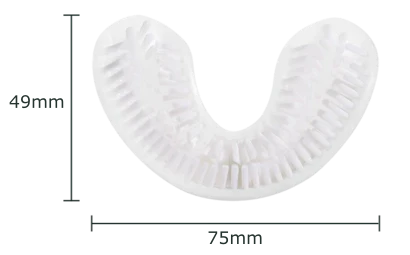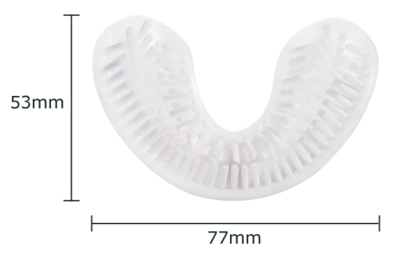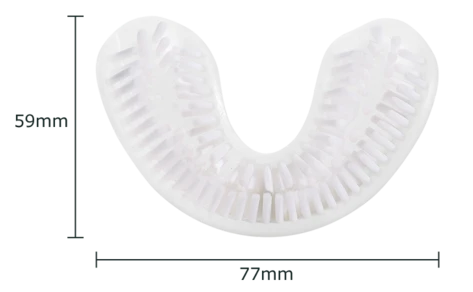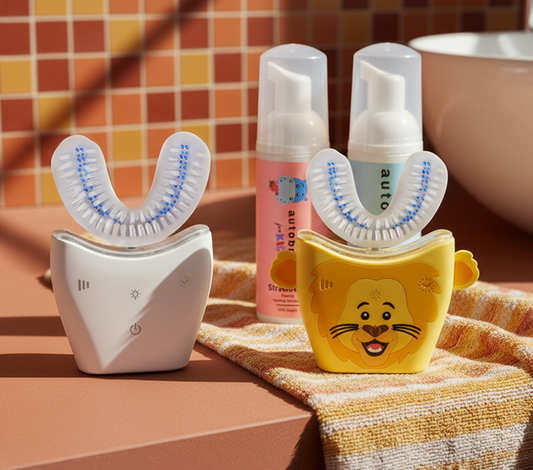
Underbites in Children: What Causes Them, The Risks & Treatment Options
If you are a parent, grandparent, or even a babysitter – you know that getting a little one’s teeth clean is no easy task. And if brushing and flossing weren’t hard enough, children with underbites can dread dental care even more.
Tooth positioning plays a huge role in developing your child’s adult smile. One crooked tooth can prevent its surrounding teeth from erupting correctly and can even result in malformed teeth. Underbites also take it one step further with the misalignment of the jaw.

As a parent, it’s important to know how to recognize underbite symptoms in your child. Not only is early treatment the quickest way to a straight smile, but it also helps your little brusher avoid any communication struggles or confidence issues.
In this blog post, we’ll cover everything you need to know about underbites in children including underbite symptoms, underbite corrections for children, and the average cost of underbite treatment.
What is an Underbite?
An underbite is a dental condition where your lower teeth jut out further than the top row of teeth. Underbites typically result from misalignment of the jaw. While mild underbites aren’t very noticeable, a severe underbite case causes the jaw to jut out – especially while smiling or talking.

Causes of an Underbite
Most underbites are the result of genetics – meaning no external factors cause them and they often run in the family.
Underbites can also be caused by the following factors:
- ⭐️ Side effects of certain medications
- ⭐️ Previous medical conditions
- ⭐️ An infection in the mouth
- ⭐️ An injury to the face or jaw.
When is tooth extraction needed?
At times, there may be one or a couple teeth that are especially troublesome in the mouth and may be removed. The need for a tooth extraction will depend on your child’s genetic make-up, as well as the extent of the malformation.
Malformed teeth can cause severe problems including making it difficult for your child to close the mouth completely or to bite down. This can lead to reduced speech, a speech impediment, or even affect the way your child's jaw grows. If a malformed tooth put your child at risk, your child’s dentist may recommend the tooth be extracted once the baby tooth is fully formed.
🦷️ Toothy Tip: It’s important to note that an underbite will require additional treatment and care beyond one tooth extraction.
Living with Underbite as a Child

Severe underbites are especially challenging for young children. During these critical years, little ones are developing key skills that may be hindered by their condition.
Consult with a dentist if your child with an underbite starts struggling with one or all of the following:
- ⭐️ Struggles with speech or developing a lisp
- ⭐️ Has difficulty eating or swallowing
- ⭐️ Struggles with brushing and flossing their teeth
- ⭐️ Avoids communicating or smiling
Is Orthodontic Treatment Safe for a Child with an Underbite?

Yes, the use of braces is safe for a child with an underbite.
Before starting treatment, your child’s dentist or orthodontist will confirm the following:
- ⭐️ Your child is at least 6 years of age.
- ⭐️ Your child doesn’t have damaged teeth or has had braces before.
- ⭐️ Your child can brush their teeth well independently.
- ⭐️ Your child is able to chew food without choking.
How Much Does it Cost to Fix an Underbite?
It is estimated that orthodontics treatment for an underbite will cost between $2,000 to $3,000 per year for one child. Additional children may receive treatment at a reduced rate.
It’s important to note that rates vary between dentists and the severity of your child’s underbite. For milder cases, braces may be recommended. More extreme cases require corrective jaw surgery by an oral surgeon.
Can You Fix an Underbite Naturally
While there is no immediate fix to underbites, mild cases can be addressed easily in young children with braces combined with the use of headgear.
How Does Underbite Headgear Work
Underbite headgear is referred to as a reverse-pull or “facemask”. It consists of two pads – one resting on the forehead and one on the chin, connected by a vertical frame. Elastics connect the frame to your child’s braces and pull the front teeth forward. This gentle pulling allows the upper jaw to catch up with the lower jaw.
Good news? Your child most likely won’t have to wear their headgear device all day long. Most treatments require the appliance to be worn for 14-16 hours daily, however, this can include time sleeping.
🦷️ Toothy Tip: The major benefit of wearing headgear is that it can significantly speed up the time-consuming underbite treatment.
Final Thoughts
If your child has an underbite, have peace of mind that there are several options for treatment. Consult with a trusted dental advisor and ensure your child receives regular dental care starting at a young age. Orthodontic treatment can help correct the teeth and jaw of a child with an underbite and help them achieve a healthy, comfortable smile.
What to Read Next...
What is the Difference: Hydroxyapatite vs. Fluoride Toothpaste












